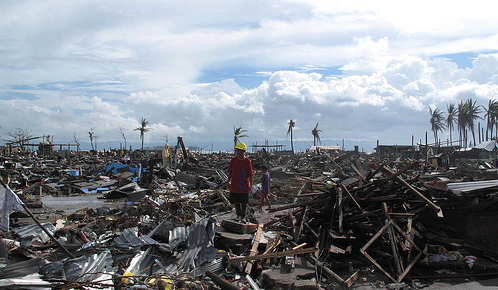
Natural and human-induced disasters present major risks to the economy, the security and well-being of citizens and society. How much do we know about them? And how we can use existing knowledge to save lives and money?
The report “Science for Disaster Risk Management 2017: knowing more and losing less“ tries to answer these and other questions while presenting a synthesis of scientific knowledge in the field of disaster risk reduction.
The report is the flagship product of the European Commission’s Disaster Risk Management Knowledge Centre (DRMKC), presenting the state-of-the-art in disaster risk management. It contributes to UN efforts to strengthen prevention, preparedness and response to calamities and it is also a key part of the Science and Technology Roadmap of the Sendai Framework for Disaster Risk Reduction 2015-2030.
The report has been presented at the UN Global Platform for Disaster Risk Reduction in Cancun, Mexico.
The report is based on the contributions of 273 scientists from 26 countries and 172 organizations and was made possible through the collaboration between 11 services of the European Commission. The final scope of the report is naturally divided into three distinct parts: understanding risk, communicating risk and managing risk.
The CMCC Foundation contributed to report, thanks in particular to Jaroslav Mysiak, Director of RAAS – Risk assessment and adaptation strategies Division, Dionisio Peréz Blanco and Elisa Calliari, both researchers at RAAS premises in Venice.
More in detail, Jaroslav Mysiak is lead author of chapter 5.4 “Risk transfer and financing” and contributing author of chapter 5.1″ Prevention and mitigation: avoiding and reducing the new and existing risks”; Dionisio Peréz Blanco is contributing author of chapter 5.4 and Elisa Calliari is contributing author of chapter 2.3 “The most recent view of vulnerability”.
The report summarizes the state of relevant science from a European perspective while making it available to the disaster risk management community. It draws from many scientific disciplines, practitioner communities and policy experts. The reviews of the scientific evidence base are summaries of recent advances and outcomes of EU research projects, and relevant national and international work.
It aims also to encourage potential synergies across disciplines, and to identify gaps in scientific knowledge for future research.
Download the entire report:
Poljanšek, K., Marín Ferrer, M., De Groeve, T., Clark, I. (Eds.), 2017.
Science for disaster risk management 2017: knowing better and losing less.
EUR 28034 EN, Publications Office of the European Union, Luxembourg, ISBN 978-92-79-60678-6, doi: 10.2788/688605, JRC102482.
Photo credits: CC DIFID – UK Department for International Development @Flickr.com


